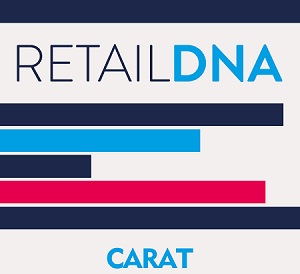Mobile is changing the way consumers shop on the high street, with a report identifying six new different shopping behaviours, to help retailers understand what motivates them.
A new study from Carat Manchester suggests a more blurred line between on and offline shopping than ever before, showing the growth of an extremely fluid shopping behaviour driven by mobile.
The six behaviours identified are:
• Stopwatch Shopping
• Wish List Shoppers
• Prescriptive Perception
• Editor’s Pick
• ‘Buying Influence’
• Private Channels
The report, titled Retail DNA, reveals that more than half (59%) of UK online sales are made through phones or tablets. 45% of retail journeys now contain mobile, from buying via smartphone to researching in-store, and 61% of omni-channel shoppers expect to use their phones more in-store this year.
Retail DNA also identifies six new consumer shopping behaviours that are redefining the traditional shopping model, including:
• ‘Stopwatch Shopping’ – Consumers have much less free time to shop in, and aren’t prepared to invest that time in shopping for the basics.
• ‘Wish List Shoppers’ – Shoppers are increasingly putting together idealist wish lists, of products they aspire to own, rather than intend to purchase. This trend extends beyond fashion and furniture either to even include ‘property porn’ – 63% of people visit property sites even though they have no intention of buying
• ‘Prescriptive Perception’ – More than two thirds (70%) of shoppers are happy to give away personal information, keen for retailers to better understand them and provide more personalised inventories
• ‘Editor’s Pick’ – People want the products they buy to reflect their personality. The trend for curated lists enables them to find items that are related to the style they aspire to.
• ‘Buying Influence’ – People want products promoted by peers; word of mouth is the most trusted source for product recommendations, and as people are going online, trust has gone digital.
• ‘Private Channels’ – Services like Facebook Messenger, WhatsApp and WeChat are increasingly finding ways to accommodate communications between businesses and consumers
The research was carried out by Canvas8, a leading consumer behaviour consultancy. Using a combination of preliminary research to scope the behaviours and interviews with a diverse group of on-demand shoppers from across the UK, the research gains a deep understanding into people’s motivations when shopping. Focusing on purchase decisions across fashion, health and beauty, home and furniture, and technology categories, the research was further enhanced by commissioning 12 consumers to keep digital diaries, providing a rich insight into the shopper journey.
“The dynamic of the brand to consumer relationship has changed immeasurably in recent times and we now operate in a world where the power has shifted wholeheartedly in favour of the consumer,” said Rachel McDonald, Managing Director at Carat Manchester. “Brands can no longer rely on price and convenience anymore they have to mean more to the consumer, offering something different and or better than competitors. The Retail DNA report reveals how consumers interact with information and content across the media infrastructure and how brands can adapt their strategies to shape the journey of experiences they have with our brands in ways that benefit everyone. We created it to offer our clients bespoke understanding of their customer’s shopper journeys, and to challenge our shared thinking and deliver actionable insight for brands to differentiate and connect with their customers.”
“Online has changed the face of retail but we’re still using the same ways of targeting consumers,” said Jerome Linder, Head of Projects at Canvas8. “Analysing shopper behaviour through the lens of behavioural insights enables brands to (re)engage with people in a way that’s relevant. Today’s behaviours are fluid. Shopper journeys are neither linear nor necessarily the result of our socio-economic status or age. Instead they’re more likely to be influenced by lifestyles and life stages. Pressed with less and less time, shoppers look to automate certain purchases in order to spend more time on those that matter.
“Or take ‘Wish List Shoppers’, people increasingly love to list products in what is a distinct and dedicated space between browsing and buying. We tested this behaviour by asking respondents to shop in a variety of sectors, and almost all of them placed items in their baskets without buying them. Just like the playlist on Spotify or a watch list on Netflix, the wish list on Amazon helps us cope better with the chaos of choice.”
